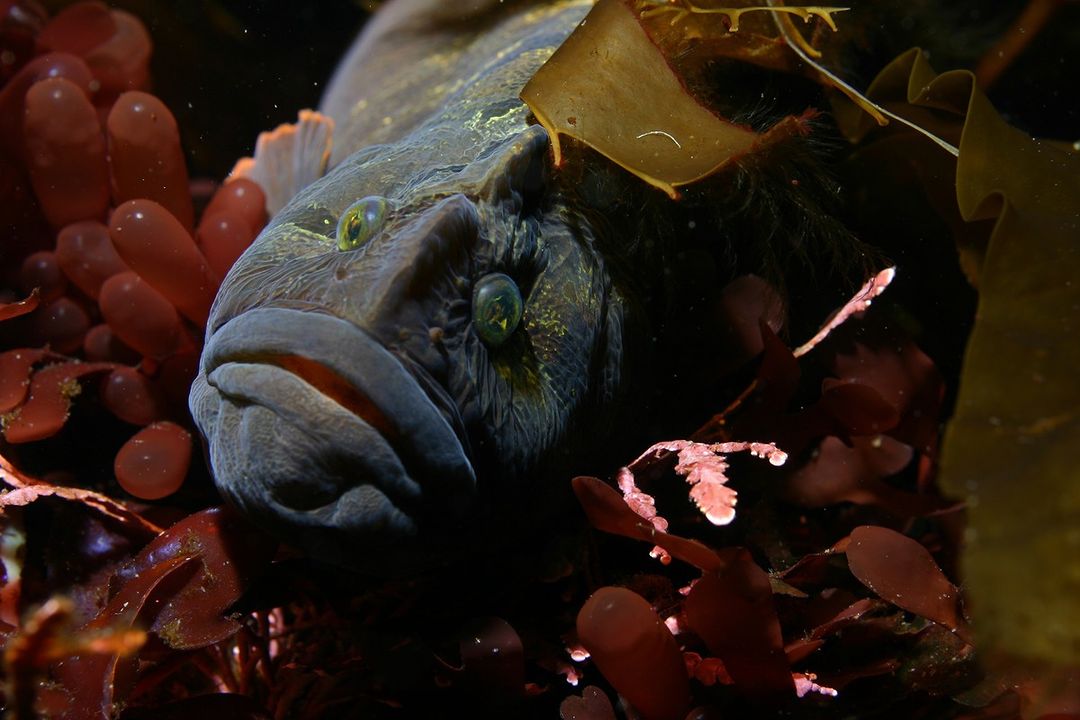Summary:
1. Introducing the Monkeyface Prickleback
2. Understanding its Habitat and Behaviors
3. The Monkeyface Prickleback’s Unique Adaptations
4. Conservation Efforts for the Monkeyface Prickleback
5. Fun Facts and Conclusion
Can we all ofishally agree that the monkeyface prickleback has one of the most excellent names? Neither a monkey nor particularly prickly, this captivating critter spends most of its life hidden in crevices in rocky reefs, rocky tidal zones, and kelp forests. A bit of a homebody, the monkeyface never travels far, primarily within 15 feet of its dwelling—which is a big mood.
Introducing the Monkeyface Prickleback
The Monkeyface Prickleback, scientifically known as Cebidichthys violaceus, is a species of fish belonging to the family Stichaeidae. Native to the Pacific coast of North America, this peculiar creature has captured the attention of marine enthusiasts worldwide.
Understanding its Habitat and Behaviors
Now, let’s dive into the monkeyface prickleback’s habitat and behaviors. These fascinating creatures prefer rocky environments like reefs, tidal zones, and kelp forests. You might find yourself wondering why they choose such specific dwellings. Well, the answer lies in their unique adaptations.
The Monkeyface Prickleback’s Unique Adaptations
One of the most remarkable adaptations of the monkeyface prickleback is its ability to squeeze into narrow crevices. Their slender bodies and flexible skeletons allow them to wriggle into tight spaces, finding safety and shelter from predators. And no, despite their name, they don’t resemble monkeys or possess any prickly attributes!
Additionally, the monkeyface prickleback has evolved distinctive coloration. Their typically greenish-brown skin helps them blend seamlessly into their rocky surroundings, providing excellent camouflage. This allows them to remain hidden from predators and prey, increasing their chances of survival.
Conservation Efforts for the Monkeyface Prickleback
While the monkeyface prickleback may have found its niche in the coastal habitats of the Pacific Northwest, its populations are not immune to threats. Overfishing, habitat destruction, and pollution pose significant challenges to the survival of this unique fish species.
To preserve this remarkable creature and its ecosystem, scientists and conservationists are working diligently to understand its population dynamics, habitat requirements, and overall ecological importance. Raising awareness about the monkeyface prickleback’s significance can inspire action to protect its vulnerable populations and the diverse marine environments it calls home.
Fun Facts and Conclusion
As we wrap up our deep dive into the mysterious world of the monkeyface prickleback, here are a few fun facts to leave you with:
1. Despite their reclusive nature, monkeyface pricklebacks are known to be caring parents. Males guard the eggs until they hatch, fanning them with their tails to provide oxygen and ensure their well-being.
2. The monkeyface prickleback has a rather unique diet. While they primarily feed on small crustaceans and marine worms, they also snack on algae and consume their shed skin. Talk about resourcefulness!
3. These elusive creatures can live up to 25 years, allowing them to spend considerable time exploring their rocky homes and adapting to changing environmental conditions.
In conclusion, the monkeyface prickleback is a fascinating being that challenges our preconceived notions about the natural world. Its name, behaviors, and unique adaptations captivate our imagination and remind us of the marvels beneath the ocean’s surface.
So, the next time you find yourself near a rocky coastal habitat, take a moment to appreciate the monkeyface prickleback’s mystical presence. Let its resilience and adaptability inspire you to protect this remarkable fish species and the fragile ecosystems that support it. Together, we can make a difference and ensure that future generations will have the chance to encounter these unique creatures in the wild.
*****
Source Description
Felt cute; I might hide in a crevice later 🐟💁💅
Can we all ofishally agree that the monkeyface prickleback has one of the most excellent names? Neither a monkey nor particularly prickly, this captivating critter spends most of its life hidden in crevices in rocky reefs, rocky tidal zones, and kelp forests. A bit of a homebody, the monkeyface never travels far, primarily within 15 feet of its dwelling—which is a big mood.


